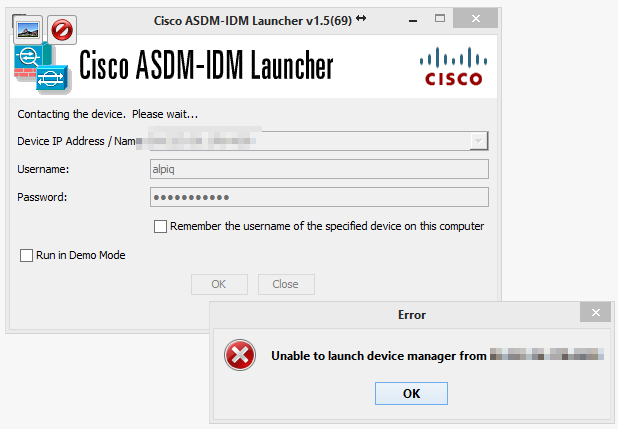

- #QOS ASA ASDM SERIAL#
- #QOS ASA ASDM SOFTWARE#
- #QOS ASA ASDM PASSWORD#
Traffic shaping must be applied to all outgoing traffic on a physical interface or in the case of the ASA 5505, on a VLAN. – IPsec-over-TCP is not supported for priority traffic classification. –ğor IPsec-encrypted packets, you can only match traffic based on the DSCP or precedence setting. – Priority packets are never dropped from the shape queue unless the sustained rate of priority traffic exceeds the shape rate. – Priority packets are always queued at the head of the shape queue so they are always transmitted ahead of other non-priority queued packets. See the following guidelines about hierarchical priority queuing: A subset of the shaped traffic can be prioritized. Hierarchical priority queuing-Hierarchical priority queuing is used on interfaces on which you enable a traffic shaping queue. Packets in the LLQ queue are always transmitted before packets in the best effort queue. These options let you control the latency and robustness of the priority queuing. You can also fine-tune the maximum number of packets allowed into the transmit queue. To avoid having the queue fill up, you can increase the queue buffer size. When a queue is full, any additional packets cannot get into the queue and are dropped. Because queues are not of infinite size, they can fill and overflow. Standard priority queuing-Standard priority queuing uses an LLQ priority queue on an interface (see the “Configuring the Standard Priority Queue for an Interface” section), while all other traffic goes into the “best effort” queue. The ASA supports two types of priority queuing: LLQ priority queuing lets you prioritize certain traffic flows (such as latency-sensitive traffic like voice and video) ahead of other traffic. Configuring Advanced Network Protection. Troubleshooting Connections and Resources. Configuring Connection Limits and Timeouts. Configuring Connection Settings and QoS. Configuring Cisco Unified Communications Intercompany Media Engine. Configuring the TLS Proxy for Encrypted Voice Inspection. Using the Cisco Unified Communication Wizard. Information About Cisco Unified Communications Features. Configuring Inspection of Management Application Protocols. Configuring Inspection of Database and Directory Protocols. Configuring Inspection of Voice and Video Protocols. Configuring Inspection of Basic Internet Protocols. Getting Started with Application Layer Protocol Inspection. Configuring Network Address Translation. Configuring Special Actions for Application Inspections (Inspection Policy Map). ! Configure a LOCAL username/password to be used for authentication. 
No threat-detection statistics tcp-intercept ! Tell the device which IP addresses are allowed to connect for SSH access and from which interface. Snmp-server enable traps snmp authentication linkup linkdown coldstart warmstart ! Tell the device which IP addresses are allowed to connect for HTTP (ASDM) access and from which interface ! enable the HTTP service on the device so that you can connect to it for ASDM access

! SSH access will use the LOCAL username/password for authentication Timeout sip-provisional-media 0:02:00 uauth 0:05:00 absoluteĭynamic-access-policy-record DfltAccessPolicy ! Tell the appliance where the asdm image is located. Icmp unreachable rate-limit 1 burst-size 1 ! name also the interface as “management” ! Configure IP address to Interface GigEth5 and put a high security level (90 is good).
#QOS ASA ASDM PASSWORD#
! Configure an “enable password” which is the administrator password of the deviceĮnable password 2KFQnbNIdI.2KYOU encrypted
#QOS ASA ASDM SOFTWARE#
The management PC is running also a TFTP server software (tftp32) which will be used to transfer the ASDM image to the ASA.īelow is the CLI configuration used in this initial setup (see video below also for more information): We will configure Interface GigabitEthernet 5 as a management interface with IP address 10.10.10.1/24.Īlso, on the same subnet we have our management PC with IP address 10.10.10.10/24.
#QOS ASA ASDM SERIAL#
First we need to have console access (with a serial console cable) to the device in order to configure some initial settings to allow user access with ASDM or with SSH.







 0 kommentar(er)
0 kommentar(er)
